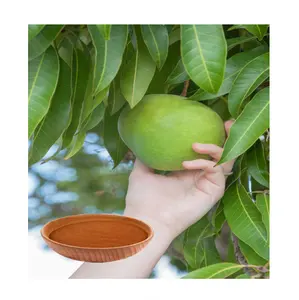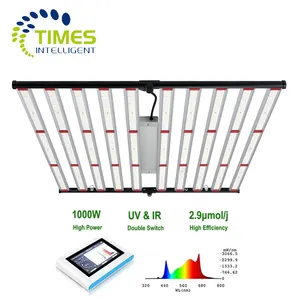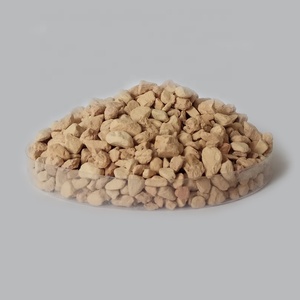What are Plant Growth Regulators
Plant growth regulators (PGRs) are substances that influence plant growth and development. They act as chemical messengers for intercellular communication, regulating a range of developmental processes, including stem elongation, germination, dormancy, flowering, enzyme activation, and leaf and fruit senescence. PGRs are used in agriculture to manage plant growth in order to optimize yields and improve crop quality. They are important tools for farmers, horticulturalists, and agricultural professionals who seek to enhance productivity in a controlled manner.
These regulators work on the principles of hormonal action within plants. Similar to hormones in animals, plant growth regulators can stimulate or inhibit growth depending on their chemical nature and concentration. For instance, some PGRs can be used to speed up fruit ripening, while others are applied to slow down the growth of weeds without affecting the crops.
The use of plant growth regulators is both a science and an art. It requires understanding the physiological responses of plants to various PGRs as well as knowledge about the timing and method of application. Proper use of these chemicals can lead to more efficient agricultural practices, reduced labor costs, and increased crop consistency and quality.
Types of Plant Growth Regulators
The world of plant growth regulators encompasses a variety of compounds with diverse functions. Some common types include:
Auxins: These are typically used to promote root initiation on cuttings and enhance fruit setting. Auxins can also be used as herbicides at higher concentrations.
Gibberellins: Applied to increase fruit size, induce seedless fruit development, and break dormancy to promote germination. Gibberellins are essential for regulating a wide range of growth processes in plants.
Cytokinins: Involved in cell division and are commonly used to promote shoot proliferation in tissue culture practices. They can delay aging and senescence in leaves and improve nutrient mobilization.
Ethylene Generators: These are used to synchronize fruit ripening, especially in tomatoes and citrus fruits. They are also used in the abscission of flowers and fruits.
Growth Inhibitors: Such as abscisic acid (ABA) analogs are used for dormancy induction, stress tolerance, and stomatal closure regulation.
These compounds have found applications in commercial agriculture for increasing crop yield, improving the quality of produce, manipulating plant architecture for better mechanized harvesting, or ensuring uniform maturation.
How to choose Plant Growth Regulators
Selecting the right plant growth regulator for your business necessitates careful consideration of several factors. First and foremost is identifying the specific growth control required for your crops or plants. Whether it's promoting rooting in cuttings with auxins or breaking dormancy with gibberellins will determine the class of PGR you need. The application method is also paramount—whether as a foliar spray or soil drench—and should align with your cultivation practices.
The formulation of the PGR is significant; liquid forms may offer ease of mixing and application whereas granular forms might provide longer-lasting effects or controlled release. Furthermore, adherence to agriculture grade standards ensures that the PGRs meet industry benchmarks for effectiveness and safety.
Understanding the release type—quick, controlled, or slow—is crucial for timing the application correctly to achieve desired outcomes. Additionally, considering packaging options such as plastic containers or drums can impact storage and handling efficiency on a larger scale.
Lastly, ensuring a sustainable procurement process includes verifying supplier credibility on B2B platforms like Alibaba.com which connects businesses with reputable suppliers worldwide.
Best Plant Growth Regulators on Alibaba.com
Alibaba.com stands out as an extensive marketplace where businesses can source an array of plant growth regulators tailored to their specific needs. The platform's global reach enables access to a broad spectrum of PGR options from various suppliers around the world. With extensive listings that cover different states like granular, liquid, or powder forms as well as various release types from quick to slow-controlled ones, businesses can locate products that align with their unique agricultural practices.
Knowing that Alibaba.com has been facilitating B2B trade since 1999 provides buyers with confidence due to its established presence in the online wholesale landscape. The platform's commitment to supporting small and medium-sized enterprises through comprehensive trade solutions further enhances its value proposition for businesses seeking reliable agrochemical products.
Moreover, features like Trade Assurance offer buyers peace of mind by safeguarding payments until delivery completion. With Alibaba.com's user-friendly interface and mobile accessibility coupled with support for local languages, sourcing plant growth regulators becomes a seamless experience aimed at optimizing agricultural productivity globally.
Common FAQs for Plant Growth Regulators
What are plant growth regulators and how are they used in agriculture?
Plant growth regulators (PGRs) are chemicals that alter plant growth patterns and are used in agriculture to improve crop yields, manage plant size, induce or delay flowering, and enhance fruit ripening.
Can plant growth regulators be used on all types of plants?
PGRs can be used on a wide variety of plants, but it is essential to select the appropriate type for a specific plant species and desired outcome. Compatibility and effectiveness can vary.
How do I determine the correct dosage of a plant growth regulator?
Dosage depends on the type of PGR, the plant species, the developmental stage of the plant, and the desired effect. Follow manufacturer guidelines and consider consulting an agronomist.
What is the difference between natural and synthetic plant growth regulators?
Natural PGRs are naturally occurring hormones within plants, while synthetic PGRs are man-made compounds designed to mimic or inhibit the action of natural hormones.
Are there organic options for plant growth regulators?
Yes, there are organic PGRs available that are derived from natural sources such as seaweed extracts and other plant-based materials.
How can I safely store and handle plant growth regulators?
PGRs should be stored in their original containers in a cool, dry place, away from direct sunlight. Always follow safety instructions for handling and disposal provided by the manufacturer.
What precautions should be taken when applying plant growth regulators?
Wear appropriate personal protective equipment (PPE), avoid application in windy conditions to prevent drift, and follow label instructions for application rates and methods.
Can plant growth regulators affect humans or animals?
Some PGRs may have harmful effects if ingested or improperly handled. Always use PGRs as directed and keep them out of reach of children and animals.
How long does it take for a plant growth regulator to work?
The onset of action for PGRs can vary from a few days to several weeks depending on the product used, application method, and plant species.
Can I use multiple types of plant growth regulators together?
Combining different PGRs is possible but requires knowledge of their interactions. Compatibility tests or expert advice should be sought before mixing PGRs.
How does weather affect the application of plant growth regulators?
Weather conditions such as temperature, humidity, and rainfall can influence the effectiveness of PGR applications. It's important to apply PGRs under favorable conditions as recommended by the manufacturer.
Are plant growth regulators environmentally friendly?
The environmental impact of PGRs depends on their chemical composition, application rate, and persistence in the environment. Always choose products with minimal ecological footprint and follow best application practices.
Can using plant growth regulators lead to resistance in plants or pests?
Continuous use of certain types of PGRs may lead to reduced sensitivity in plants over time. Alternating between different classes of PGRs can help mitigate resistance development.










































 浙公网安备 33010002000092号
浙公网安备 33010002000092号 浙B2-20120091-4
浙B2-20120091-4